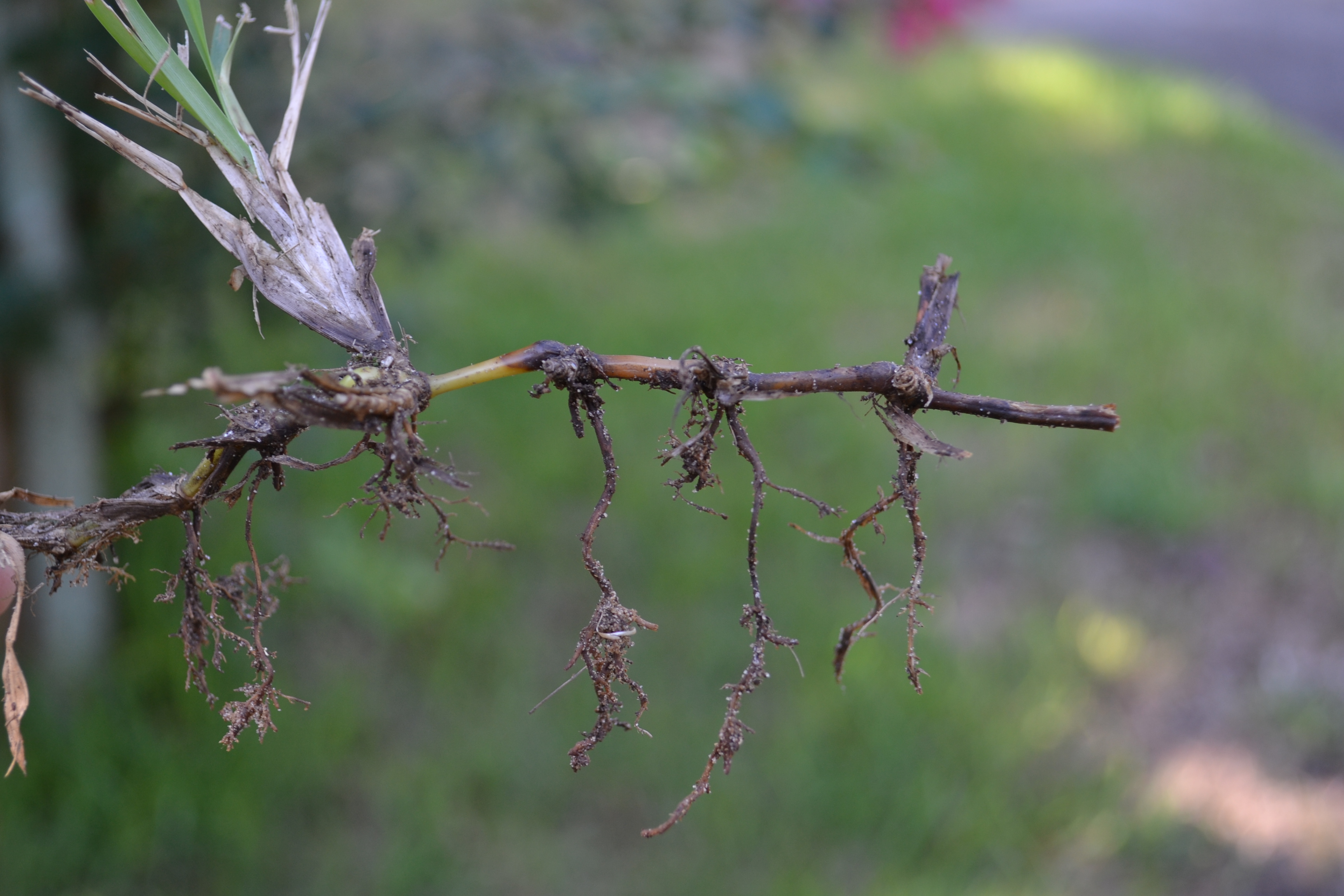
by Beth Bolles | Nov 22, 2016
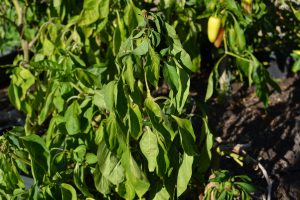
Leaf wilt may indicate more than just dry soil. Photo by Beth Bolles
Plants have specific ways of telling gardeners that there is a problem, but not all plant symptoms lead us directly to the cause. During drier conditions, we often use wilting leaves as an indicator that water is needed. This can be a reliable symptom that the soil is lacking moisture but it is not always the case. Wilting leaves and herbaceous branches actually tell us that there is not adequate water in the plant. It does not necessarily indicate lack of moisture in the soil.
There can be many reasons why water is not being absorbed by roots and moved to tissues in the plant. The obvious place to start is by checking soil moisture. If soil is powdery several inches deep around the plant, water is likely needed. However, if you ball the soil up in your hand and it holds together, there may be another reason for lack of water reaching the upper plant parts. The harder part is determining why the root system is not taking up water. Causes can be a rotted root system from too much water, a poorly developed root ball that has circling or kinked roots, and even problems in the soil such as compaction. Insects, diseases, and other pathogens can also injure root systems preventing the uptake of water.
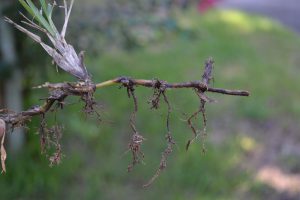
Too much water can cause roots to decay, preventing the uptake of water. Photo by Beth Bolles
So before automatically grabbing the hose or turning on the sprinkler, do a little soil investigation to make sure that the plant wilt is really indicating lack of water in the soil. If you need help in your diagnosis, always contact your local Extension office.

by Beth Bolles | Oct 7, 2016
The year’s mild winter and frequent rain showers have created lush lawns and gardens with an abundance of insects. As a result, we are seeing many predator arthropods taking advantage of the available feast. One of the morning interesting creatures in the garden is the spiny orb weaver spider (Gasteracantha cancriformis) that has an interesting body shape.
Spiny orb weavers are common spiders in landscapes that might not be noticed since they are much smaller than the Yellow garden spider (Argiope aurantia) and the Golden silk spider (Nephila clavipes). Once viewed, the spiny orb weaver will catch your attention because it’s abdomen has six ‘spines’ or points that extend out. Spiders also have a mix of yellow, white, red, or black marking on the abdomen.
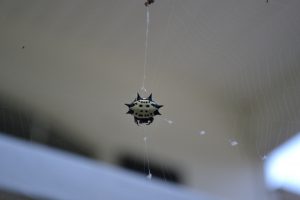
Spiny orb weaver in the center of the web waiting for a meal. Photo by Beth Bolles
Although spiders are small, the webs which are common amongst shrubs, trees, and edges of woods become quite substantial in the fall. There may be up to 30 spirals that extend out with the spider situated in the center. You may unexpectedly encounter a web when walking through the garden or mowing around trees and shrubs. There is no worry if a spider accidently gets on you as bites are not common and not considered serious.
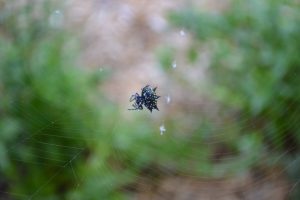
Spider working on her web. Photo by Beth Bolles
Some may refer to the spiny orb weaver as a crab spider based on its shape, but it is a web building where the true crab spiders are active hunters often found resting on flowers in order to ambush a meal.
Enjoy our fall weather and look out for this beneficial spider in your landscape.
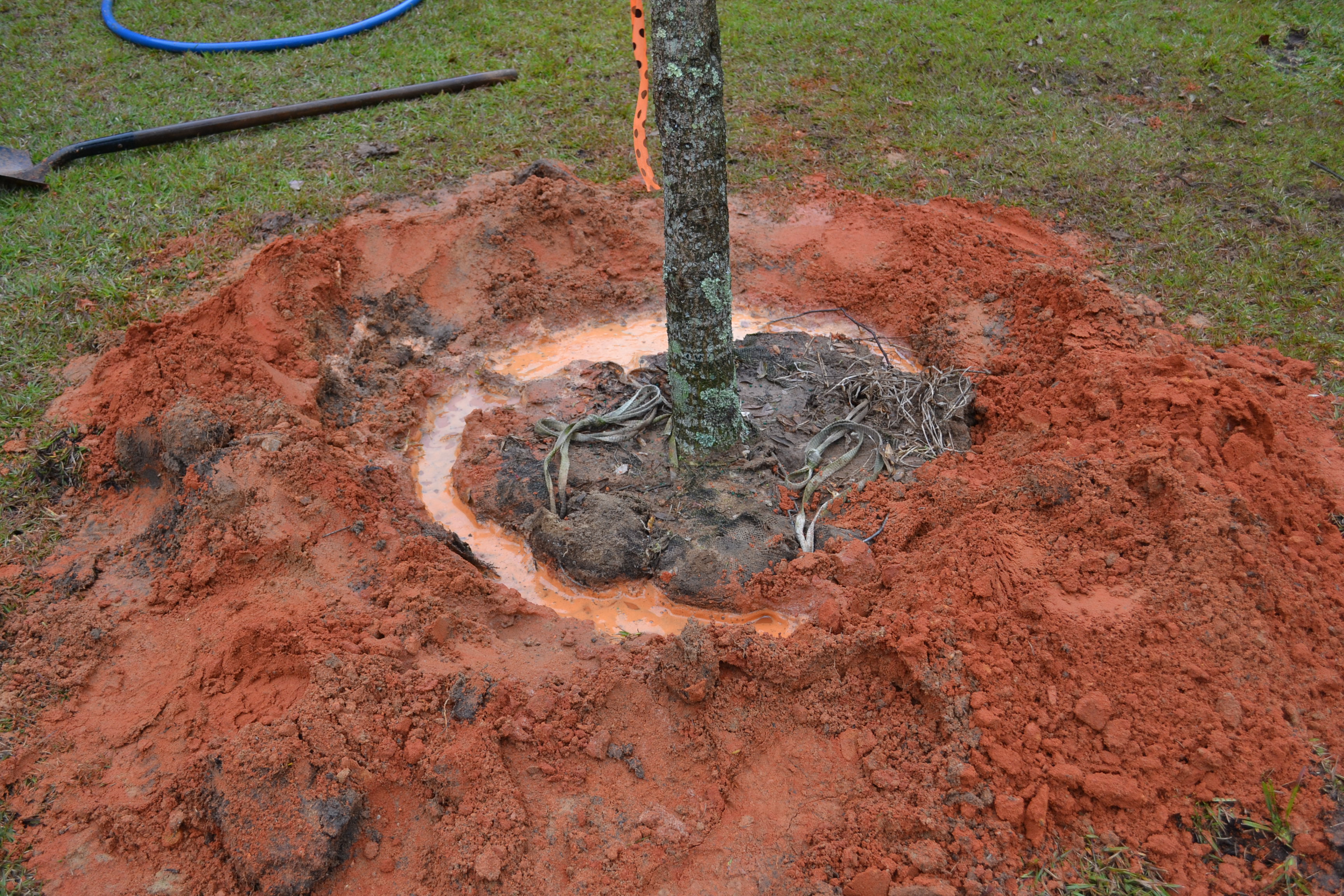
by Beth Bolles | Sep 8, 2016
By the look of the crowded nurseries during March and April, springtime seems to be the best time for planting. This is the case for our frost tender annuals and perennials but we are actually heading into our best seasons for planting trees and shrubs.
The fact that above ground portions of trees and shrubs go through a time of slowed growth or dormancy is the good reason for planting during the fall and winter. Although we don’t see it, roots are still growing slowly and the upcoming months give new plants the time for roots to spread into surrounding soil before hot temperatures return. Water stress is also not as significant during the cooler months. Plants still need to be supplied regular water but needs are not as high, especially if rainfall occurs.
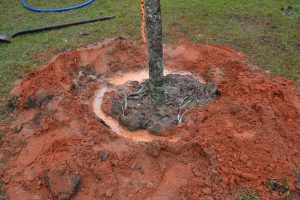
A tree installed in the cooler months has more time to establish before hot weather returns.
Start gathering your ideas for new or replacement trees and shrubs that will match your landscape and visit a local nursery this Fall.
If you need an update on tree and shrubs planting and care techniques read more in the UF IFAS publication.
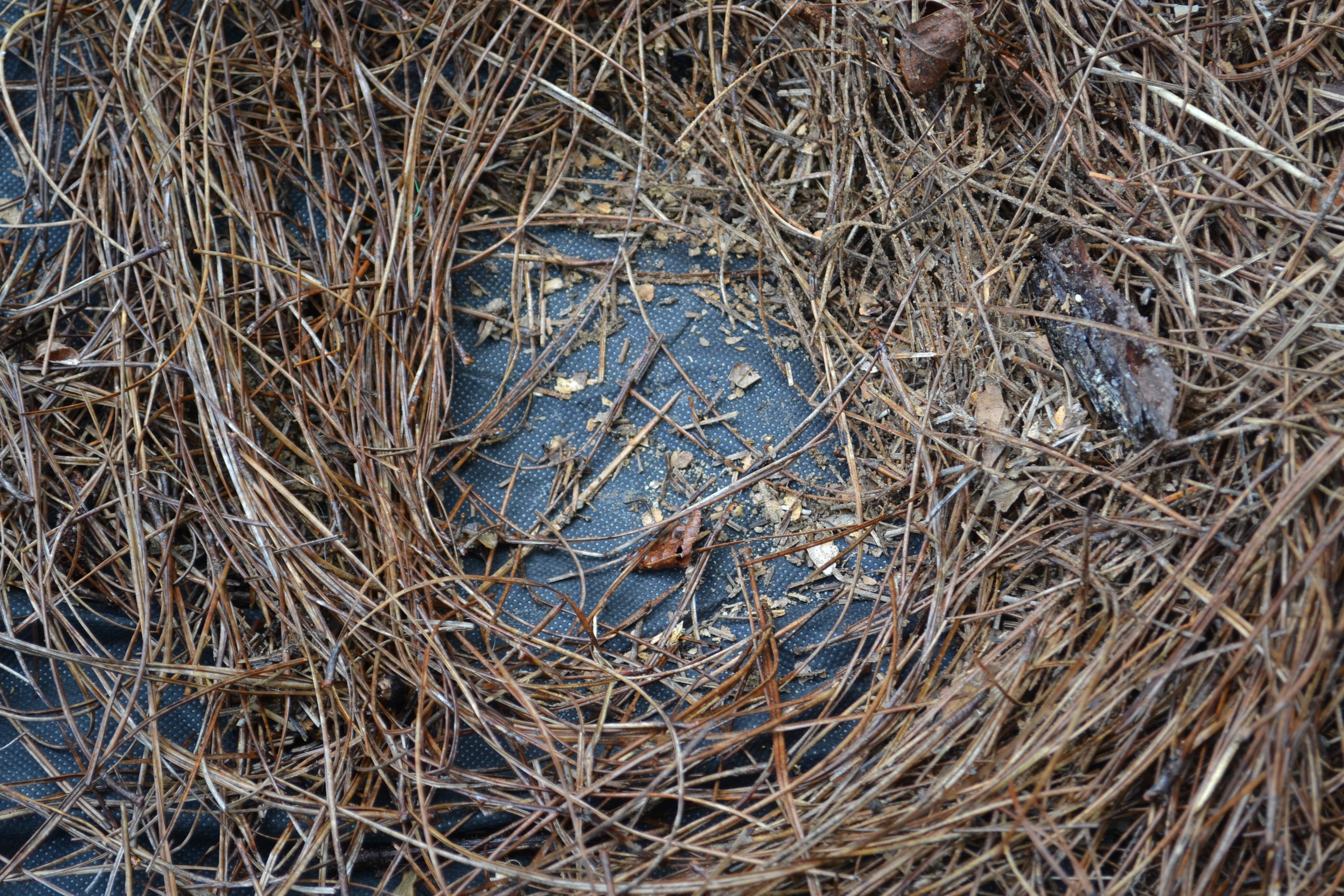
by Beth Bolles | Aug 12, 2016
Homeowners and horticulture professionals spend time to develop an attractive ornamental bed only to have weeds take over months or a few years later. One common method in the attempt to prevent weeds is to apply a landscape fabric around plants in beds and place a layer of mulch on top to dress it up. The thought is that this barrier on top of the soil will prevent a large number of weeds from emerging. The fabric physically prevents the growth of weeds form the soil below and blocks sunlight from reaching weed seeds. Available fabrics are labeled as porous to allow air and water to move through them and reach ornamental plant roots.
On paper, landscape fabric sounds like a good idea and it may work for a little while. Over time, soil particles and decomposing mulch fill up the porous spaces in the fabric which prevent air and water from reaching plant roots. Even with irrigation or routine rainfall, plant roots often do not receive the needed water and air for healthy growth. Plants may respond by trying to send roots through fabric seams which breaks down the intended weed barrier. Other plants slowly decline or may die quickly due to water stress or lack of sufficient air movement into the soil.
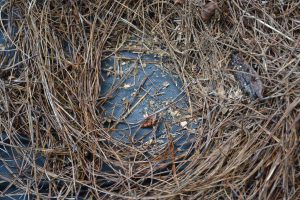
Fabric may initially prevent some weeds but it can also prevent air and water movement. Photo by Beth Bolles, UF Extension Escambia County
Weed seeds also find their way into the mulch that is on top of the fabric from nearby lawns and landscapes. The next thing you know, you have an entire weed crop growing in the mulch on top of your landscape fabric. Perennial weeds such as torpedograss and purple nutsedge eventually grow through fabrics.
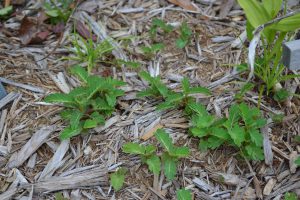
Seeds from annuals like Chamberbitter easily get into mulch from surrounding areas and grow on top of fabrics. Photo by Beth Bolles, UF Extension Escambia County
The best place to consider fabric if you want to install it in the landscape is under mulched paths or other areas without ornamental plantings where a synthetic groundcover is needed. In order to have a healthy root environment for your ornamental bed plants, it is best to keep landscape fabric out of these areas.

by Beth Bolles | Jul 7, 2016
Many of the plants in our gardens have been developed and discovered that offer interesting characteristics. These may include leaves with variegations, dwarf growth habits, or even contorted stems. We enjoy these plant differences and many of these plants are big business in the nursery trade. In nature, it is likely these interesting plant mutations would not survive as they are less likely to be able to reproduce successfully. Horticulture professionals keep these plants available most often by propagation through cuttings and tissue culture.
Sometimes in the landscape, nature prevails and we see one of our favorite plant varieties revert back to its original or “wild” form. You may see a stem on a variegated plant that has larger leaves that are all green.

‘Butterfly’ Japanese maple has beautiful variegated foliage. One stem has reverted to an original form with large green leaves. Prune out this stem. Photo by Beth Bolles
These stems often grow more vigorously and can use nutrients and energy that the remainder of the plant needs. As soon as you see these different stems, prune them back to a connection with another stem that exhibits the plant characteristics you want.













